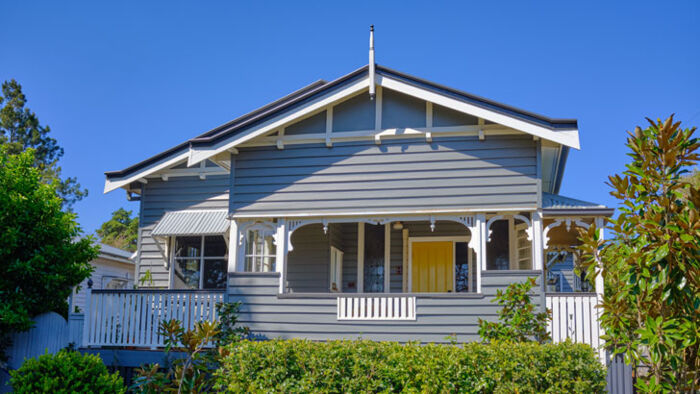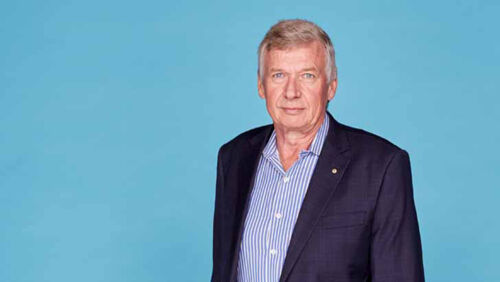Top eight regional cities for property investors
By Tom Watson
After a year-and-a-half of frenetic growth, the property price boom which has touched virtually every corner of the country appears to be over.
For a third month in a row CoreLogic's latest national Home Value Index fell, with Sydney (-2.2%), Melbourne (-1.5%), Hobart (-1.5%), Canberra (-1.1%) and Brisbane (-0.8%) all notching price drops over July. Even in cities like Adelaide and Perth where prices are still rising, the rate of growth has slowed considerably compared to its peak last year.
While prices seem to be cooling in most capital city markets, especially the likes of Melbourne and Sydney, recent research conducted by buyer's agency InvestorKit has found that property fundamentals such as supply, demand and confidence still remain strong.
"Our outlook remains positive; however, one should not confuse a positive outlook for a market where everything continues to grow by more than 20% per year in almost every city. Those times are over and are not sustainable," says founder and head of research at InvestorKit, Arjun Paliwal.
"Early last year, 22 of 25 housing market fundamentals ranked as either strong or very strong. A drop-off to 17 has occurred, however, that is still a positive number. Any weakness we currently see is expected to be short-lived due to these remaining healthy housing fundamentals."
As part of the research, InvestorKit also analysed 25 of Australia's most populated regional cities on a host of indicators, revealing eight cities with strong fundamentals which, according to Paliwal, could prove particularly appealing to those on the hunt for an investment property.
"These are areas where it's easy to find a tenant, rents are likely to rise and they're well insulated through very low supply," he says.
"With regard to prices, if the overall trend is softening, these areas are also likely to soften less and bounce back a little bit sooner."
Top eight regional cities for investors
| Median Price | Vacancy Rate | Rental Yield | |
| Bunbury (WA) | $387,500 | 0.4% | 5.6% |
| Bundaberg (QLD) | $389,000 | 0.3% | 5.4% |
| Launceston (TAS) | $548,750 | 1.0% | 4.3% |
| Ormeau-Oxenford (QLD) | $751,750 | 0.3% | 4.0% |
| Rockhampton (QLD) | $375,000 | 0.3% | 5.8% |
| Shepparton (VIC) | $420,000 | 0.3% | 4.6% |
| Toowoomba (QLD) | $480,000 | 0.4% | 4.3% |
| Townsville (QLD) | $382,000 | 0.4% | 5.6% |
Source: InvestorKit - Australia's Housing Fundamentals Analysis
Here's a brief rundown of the top eight regional cities identified by InvestorKit.
Bunbury (WA)
Located two hours south of Perth, Bunbury was the sole regional city highlighted by InvestorKit in Western Australia. While prices have remained relatively stable over the past decade, in the 12 months to May the median house price in the 6230 postcode shot up by 7.6% to $387,500, with InvestorKit noting that asking prices rose by 4.4% in the past quarter alone.
On the rental front, conditions in Bunbury remain tight. The very low vacancy rate (around the 0.4% mark) has helped median rent prices for houses in the city surge by 16.4% over the past year to a new high of $420 per week. According to InvestorKit, investors in Bunbury can expect a high rental yield in the region of 5.6%.
Bundaberg (QLD)
One of the many cities identified in the sunshine state, Bundaberg has been highlighted as having 'strong' future growth potential for investors. House prices in Bundaberg have risen sharply of late, with the median price now sitting at around $390,000 thanks to an 18.8% increase in the year to May. And despite a recent uptick in listings, InvestorKit says that supply is still well below pre-pandemic levels.
With a rental vacancy rate of around 0.3%, demand for rental houses continues to be very high in Bundaberg. The median rental price is currently around $400 per week, which is 14.3% higher than it was a year ago and 40% higher than it was a decade ago. InvestorKit says that property investors can expect a rental yield around the 5.4% mark.
Launceston (TAS)
Much has been written about the meteoric property price rise in Hobart, so investors looking for a more affordable option may want to turn their attention to Tasmania's second largest city of Launceston. InvestorKit notes that Launceston has experienced a recent boom of its own though, with the median house price rising by 33.8% in the 12 months to May to a new high of $548,750.
While Launceston's vacancy rate of 1.0% isn't nearly as low as some areas, the median price for a rental house in the city has still increased substantially. Currently sitting at around $450 per week, that figure has risen by 18.4% in a year and 64% over the past decade. As a result, InvestorKit describes the rental yield for a house in Launceston as being healthy at 4.3%.
Ormeau-Oxenford (QLD)
Nestled in the corridor between Brisbane and the Gold Coast, the Ormeau-Oxenford region is experiencing both strong house price growth and rental demand. InvestorKit found that the median house price in the region rose by 20.3% annually to a new high of $751,750 in May 2022, while asking prices in the 4212 postcode increased by 10.5% in the last quarter alone.
In terms of the rental market, InvestorKit says that vacancy rates in the area are currently extremely low at around 0.3% - the lowest they've been in over 15 years. Unsurprisingly then, the median rent for a house in the region has jumped by 23.4% in the last year to $580 per week. InvestorKit also anticipates that investors can get a rental yield of around 4.0% in Ormeau-Oxenford.
Rockhampton (QLD)
Heading further north, Rockhampton is another of the cities on the Queensland coast identified by InvestorKit as having potential for investors. While Rockhampton hasn't witnessed the momentous price growth of some of the other cities mentioned, the median house price did rise at a steady rate of 7.1% to $375,000 in the year to May. InvestorKit also found that asking prices for houses in the 4701 postcode increased by 7.9% over the last quarter.
At 0.3%, vacancy rates in Rockhampton are incredibly low. In fact, InvestorKit says that they're at the lowest level recorded since the end of the mining boom, which has helped push up the median rental price of a house by 10.5% over the past year to $420 per week. And in terms of rental yield, InvestorKit puts it at 5.8% which is the highest of the eight regional cities highlighted.
Shepparton (VIC)
The major service centre for the Goulburn Valley region, Shepparton was the only Victorian city to make InvestorKit's list of potential investor hotspots. Shepparton has witnessed its fair share of price growth in recent times, with the median house price increasing by 18.8% to $420,000 in the period between May 2021 and 2022. Interestingly though, asking prices for houses in the 3630 postcode fell by -1.2% over the last quarter.
The rental market in Shepparton is as tight as any another city profiled, with a vacancy rate hanging around the 0.3% mark - the lowest it's been in 15 years. Rental prices for houses have risen as a consequence, with the median rent now around $370 per week which is up 8.8% over the year and 42% over the last decade. InvestorKit says investors can expect a 4.6% rental yield in the city.
Toowoomba (QLD)
According to Paliwal, the city of Toowoomba is "firing on all cylinders" thanks to a combination of low housing supply, low rental vacancies and plenty of jobs and economic activity. It's also experienced sharp price growth in a short period of time, as the median house price in Toowoomba jumped by 16.2% from $413,000 to $480,000 in the year to May.
As Paliwal suggests, competition in the city's rental market is very high at present, with a decade-low vacancy rate of roughly 0.4% and rising rent prices. In the past year alone, the median rental price for a house in Toowoomba has risen by 11.1% to $400 per week. So, in terms of yield, InvestorKit says that investors can expect a figure in the region of 4.3%.
Townsville (QLD)
Last, but not least, is the city of Townsville in North Queensland. At $382,000, Townsville has the lowest median price of any of the regional cities highlighted by InvestorKit, making it one of the more affordable options for buyers. Having said that, the median price in the city did jump by 7.6% in 12 months to May 2022.
In terms of the rental market, Townsville's vacancy rate of 0.4% is the lowest it's been in 15 years, meaning that there's plenty of competition among renters at present. The median rent for a house in the city has also risen sharply by 7.9% over the past year to $410 per week. And with a rental yield of 5.6%, Townsville is offering one of the highest yields of the regional cities on InvestorKit's list.

Tips for investors looking to buy
While there may be plenty of potentially rewarding locations for investors to look into at present, cooling prices and rising interest rates have changed the overall property landscape in recent months.
So, if you are thinking about dipping your toes in the market, here are some tips from two investment property experts that may be worth taking into consideration.
1. Target areas with amenities and growth potential
"Finding markets that have a diverse economy, major government projects, consistent population growth and land scarcity, generally points to a strong economic uplift potential and increase in housing demand," says co-director at The Investors Agency, Bobby Haeri.
"Matching these characteristics with affordability is a sure win for strong growth. How does that look in today's economy? A large number of job ads combined with yields of 5.8% or above is a quick start way to filter out markets before validating further."
2. Focus on the future, not rate rises
"Property investors shouldn't be overly concerned with rising interest rate costs, instead, they should have their eyes forward on the three to five years ahead," Paliwal says.
"In my opinion, rents are just going to keep skyrocketing, so property investors shouldn't get stuck with the slightly lower yields of today that have caused rental yields to be a little bit weaker. Remember, your purchase price is locked in, but your rent isn't."
3. Higher-yield markets could offer twofold benefits
"Those who have previously been more attracted to negatively geared markets are looking for ways to support their debt due to the interest rate rises," Haeri says.
"This mean that higher yielding markets will gain more buyer demand than ever before, so getting into these markets sooner than later will not only generate cashflow, but also generate fast equity because of the interest in these areas, it's a two-for-one deal."
4. Bid early and bid hard
"A strong opening bid, more than ever, is going to shake your competition off in an environment with low auction clearance rates like we're seeing right now," says Paliwal.
"When there are weaker opening bids, people still feel like there's a bit of a race going on and they get involved, whereas a strong opening bid can really crush the spirits of those that were hoping to lowball or bargain hunt."
5. Don't rule out the major cities
"Markets with high debt, typically Sydney and Melbourne based metro suburbs can benefit those looking to snatch up a deal if their lending profile is supported by negative gearing and if the buyers are patient enough to wait for the gains to return," says Haeri.
"We can expect to see a good downturn in the months to come, but investors will need to be aware of the increasing repayment cost, which can affect midrange income-earning investors or those with a lower lending profile."
Interested in checking out even more investment hotspots? Take a look at Terry Ryder's top locations to buy property in your state in 2022, or if you're already a property investor, make sure you're making the most of your entitlements with these six tax tips for landlords.
Get stories like this in our newsletters.



